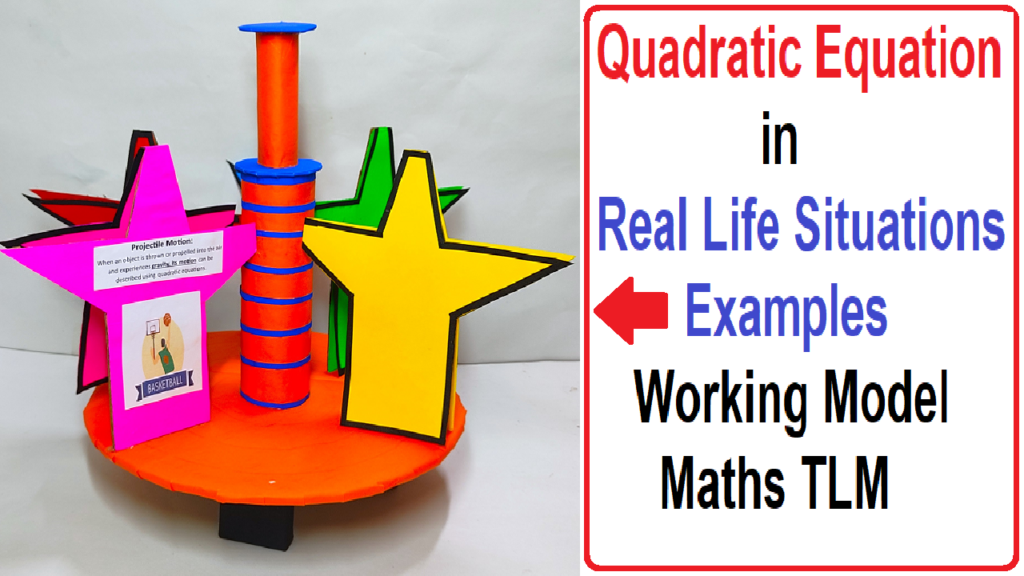Creating a working model that demonstrates quadratic equations in real-life situations using colored paper and cardboard is a fantastic way to understand their practical applications.
Here are 10 examples along with a step-by-step guide to create the model:

Title: “Quadratic Equations in Action: Real-Life Examples”
Materials Needed:
- Cardboard (for the base and shapes)
- Colored paper (for decoration and shapes)
- Pencil and ruler
- Craft glue or hot glue gun
- Scissors
- Markers or pens
- Labels and descriptions
10 Examples of Quadratic Equations in Real Life:
- Projectile Motion: Demonstrating the path of a projectile, like a thrown ball.
- Architectural Arches: Showing how the shape of an arch can be represented by a quadratic equation.
- Optimal Plant Growth: Modeling how the height of a plant changes over time, taking into account factors like sunlight, water, and nutrients.
- Satellite Orbits: Representing the path of a satellite orbiting a celestial body.
- Bouncing Ball: Illustrating how a ball bounces and how its height can be modeled by a quadratic equation.
- Parabolic Mirrors: Showing how parabolic mirrors focus light to a single point.
- Bridges and Arches in Engineering: Demonstrating how engineers use quadratic equations to design strong and stable structures.
- Water Fountains: Modeling the shape of water jets in a fountain.
- Car Headlights: Designing the shape of car headlights to ensure optimal illumination.
- Profit and Loss in Business: Using a quadratic equation to calculate profit or loss based on production and sales.
Step-by-Step Instructions:
- Plan Your Model:
- Decide which real-life example you want to demonstrate. Each example will have a corresponding 3D model.
- Prepare the Base:
- Cut out a large, sturdy base from cardboard. This will be the foundation for your model.
- Create 3D Models:
- Use colored paper to create 3D models that represent the chosen real-life examples.
- Label Models:
- Label each model with its corresponding real-life example (e.g., “Projectile Motion,” “Architectural Arches,” etc.).
- Display Quadratic Equations:
- Write down the quadratic equations that correspond to each example. Attach these to the respective models using labels.
- Decorate and Arrange:
- Use colored paper and markers to decorate the models and base. Arrange the models on the base in an organized and visually appealing way.
- Include Descriptions:
- Attach labels or descriptions to explain the real-life examples and how quadratic equations apply to them.
- Presentation Board (Optional):
- Create a presentation board with additional information about quadratic equations and their applications. Include diagrams and explanations.
- Set Up Your Exhibition Display:
- Arrange your model on a table with clear signage and any supporting materials you’ve prepared.
Your “Quadratic Equations in Action” working model is now ready for exhibition! This project effectively demonstrates the practical applications of quadratic equations in various real-life scenarios. It provides an interactive and engaging learning experience for viewers.

